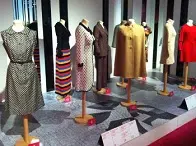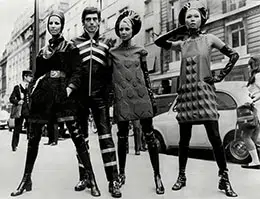 The expression prêt-à-porter belongs to the French language, although it is also used in our language to refer to mass-produced and ready-to-wear clothing . This means that ready-to-wear garments are not personalized or exclusive .
The expression prêt-à-porter belongs to the French language, although it is also used in our language to refer to mass-produced and ready-to-wear clothing . This means that ready-to-wear garments are not personalized or exclusive .
Also linked to the English phrase ready to wear , the notion of ready-to-wear is attributed to Pierre Cardin . It began to be used in 1950 with the intention of promoting democratization in access to fashion .
The keys to ready-to-wear are the use of inexpensive materials (at least compared to those used in haute couture) and industrial manufacturing. Ready-to-wear creators work with standardized sizes .
In ready-to-wear, in short, the designs are not unique. Multiple garments are produced and the same models are offered in different sizes or sizes as they are created en masse. Thanks to these characteristics, those who do not belong to the upper class of society can also buy and wear these products, since they do not need to go to a dressmaker.
It is interesting to note that, in the ' 50s, many designers opposed the development of ready-to-wear. The leaders of haute couture (haute couture) defended artisanal work and personalized garments created to order, exactly the opposite of what prêt-à-porter advocated.
Ready-to-wear collections allow people to get new designs and garments in line with the latest trends in numerous stores. This achieves the objective of bringing fashion to a greater number of sectors, without depending solely on the wealthiest.
Pierre Cardin is a designer born in Italy in 1922, despite the fact that his stage name is French and having become internationally famous for the creation of ready-to-wear fashion. We must place ourselves in the context of post-war Europe to understand that only a few could afford to buy custom-made garments and that haute couture was becoming less and less important.
 It was then that Cardin created this system that consisted of making clothing more practical and accessible to almost all consumers. It should be noted that this model, which was a revolution almost a century ago, is the most common today: we go to a store, either for economic convenience or because of affinity with its trends, and we buy a unit of a garment that is manufactured en masse, for hundreds and thousands of people to enjoy.
It was then that Cardin created this system that consisted of making clothing more practical and accessible to almost all consumers. It should be noted that this model, which was a revolution almost a century ago, is the most common today: we go to a store, either for economic convenience or because of affinity with its trends, and we buy a unit of a garment that is manufactured en masse, for hundreds and thousands of people to enjoy.
When ready-to-wear emerged, its distribution took place in boutiques , which are equivalent to today's department stores or shopping centers. It is curious to think that the vision that high society had at that time of those who were forced to purchase these mass-produced products has not changed so much over time, although among today's ready-to-wear consumers there are also people with high purchasing power.
Nowadays, buying clothes made to measure by a dressmaker is still something of the wealthiest consumers, but among those who consume ready-to-wear there are also customers whose pockets are very deep. The nuance that needs to be applied to this equation to understand the differences between today and the mid-20th century is the great diversity of brands , which range from the most accessible (with stores that really resemble department stores) to the exclusive ones (where the price of one t-shirt can be equivalent to several sets of one of the above).
Competition has always been a key element in the success of almost any commercial venture, and in the case of ready-to-wear products it also happened: although as soon as it was presented on the market it was not well accepted, this improved as big names joined in, such as Chanel and Yves Saint Laurent.
